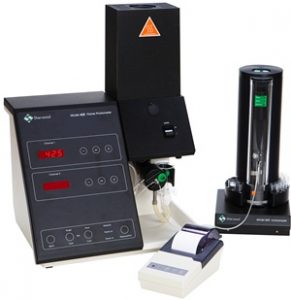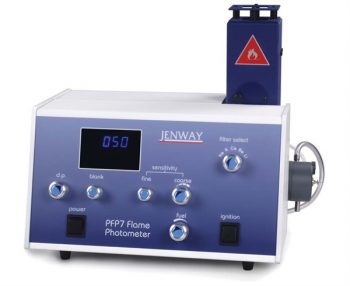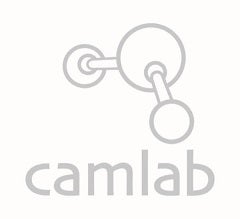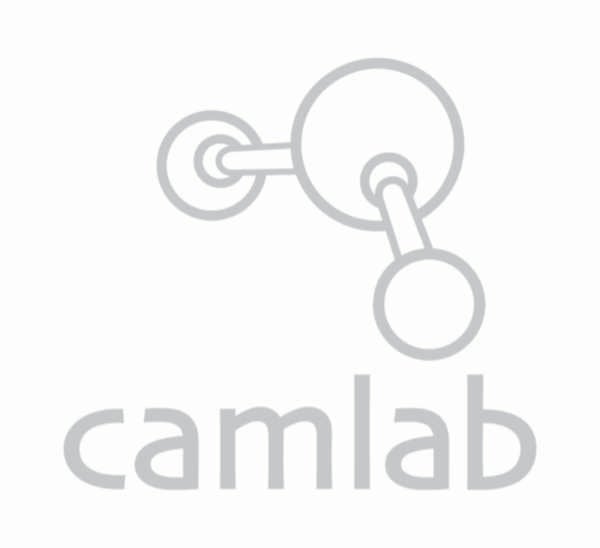Flame photometers function on principle of atomic excitation and de-excitation followed by light emission to measure the levels of particular elements (including K, Na, Li, Ca and Ba). Over particular ranges, the intensity of the light emission is directly proportional to the number of atoms of that type present in the sample. Also known as flame atomic emission spectroscopy, it is a branch of atomic spectroscopy. This method of measurement is a particularly useful alternative to colorimetric photometry for elements such as sodium that do not produce coloured compounds. Although not as commonly used as it once was, flame photometry still has its place range of industrial and clinical applications.


The Sherwood 425 Flame Photometer
Types of Flame photometer
Flame photometers all function on the same principle however there are some differences between models available. Some have a limited number of filters and can only monitor levels of a couple of different elements. Many ranges of flame photometers come with clinical (research) and industrial models that have features designed to suit each purpose. The industrial models display results directly in ppm whereas the clinical models have in-built lineariser circuitry allowing readings of Sodium and Potassium to be displayed in mmol/l which is necessary for its main function in monitoring levels of these in plasma.
Flame photometers have the ability to measure emissions from multiple atoms; however they cannot measure all of them at once. The most common types are single and dual channel instruments and this terminology relates to the number of ions that can be measured at the same time. The benefit of dual channel instruments is the ability to measure two parameters simultaneously without the need for re-calibration of the instrument in between. In a single channelled model, you would need to re-calibrate when measuring a new parameter. However the cost of the simpler single-channelled models is less.
Required accessories
Many of the flame photometer models out there require a number of accessories to be purchased separately that are needed to make the unit functional. These will differ slightly based on your power and gas supply.


Jenway PFP7 Industrial Flame Photometer
The popular Jenway PFP7 and PFP7/C models requires the following:
The air compressor – select the correct voltage matching that of the unit.


Jenway compressor for the PFP7
A gas regulator is needed to regulate the pressure of fuel being fed into the flame photometer. You will need to select the correct regulator for your gas supply and the following options are available:
Calibration standards are needed to perform calibration of the unit. As the unit measures using a comparative method, the quality and purity of the standards used will directly affect its accuracy and performance. Flame photometers need to be regularly calibrated and standards should be handled with the utmost care to prevent contamination which would lead to errors in readings. It is recommended that if the standards are being stored at high temperatures or for longer periods of time, a mould inhibitor such as an azide should be added. If this contains the element of interest, it should also be added to the sample to be measured so not to skew your results. It is also recommended that standards should have a wetting agent added (such as Decon 90 to promote self-cleaning of the machine. Any agent should be non-ionic and used only at a concentration of less than 3ppm. This should also be added to samples at the same concentration. Calibration standards are available in the ppm and mmol/l.
Recommended Accessories:
A water separator is recommended to remove any residual water from the compressed air supply. The size of water separator required depends on the local humidity. If there is high humidity then the large water separator is recommended.
A fuel filter is recommended to ensure that no particulates get into the mixing chamber from the fuel supply
Application guidance:
We have a number of other posts on the various applications of flame photometers:
Servicing and calibration:
We have a range of spares for the various flame photometer models. The Camlab service department also offers annual calibration and service contracts. You will benefit from a 10% discount on any spare parts needed throughout the contract period. Please contact sales@camlab.co.uk for more information on our servicing options available.
Our range of flame photometers can be found here. If you have any questions on our range and the accessories needed, please contact us using the contact form below. Alternatively, you can reach us by telephone on the number 01954 233120 or email us at support@camlab.co.uk.























